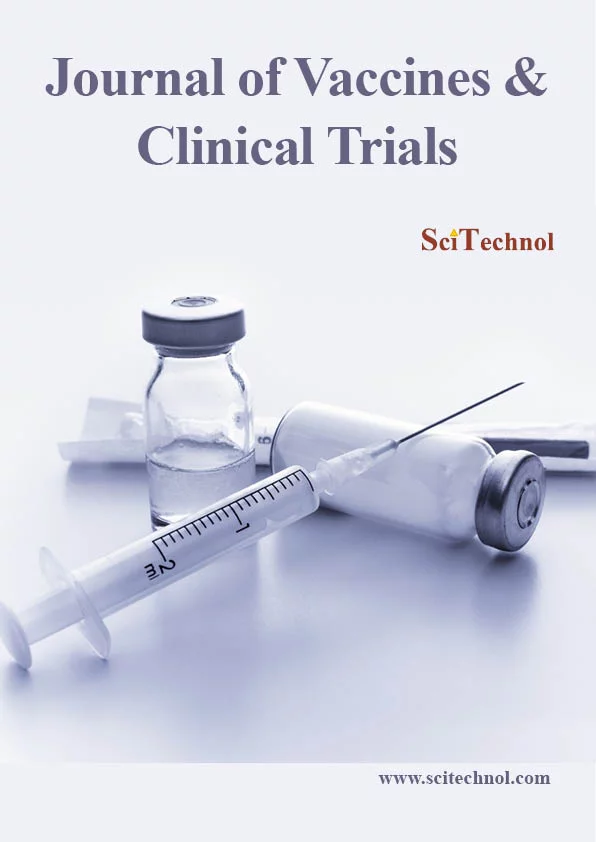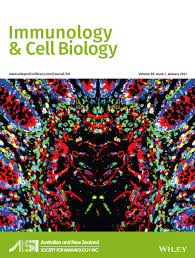Theme: “New Era of Scientific Insight in the Prevention & Treatment of Viral Diseasesâ€.
Virology 2021
ConferenceSeries Ltd invites all the participants from all over the world to attend “Virology 2021” during April 26-27, 20201 at Tokyo,Japan which includes prompt keynote presentations, Oral talks, Poster presentations and Exhibitions.
Target Audience:
- Virology Students, Scientists
- Virology Researchers
- Virology Faculty
- Medical Colleges
- Virology Associations and Societies
- Research Labs
- Manufacturing Medical Devices Companies
The Conference highlights will include Viral Pathogenesis, Corona virus, Diagnostic Virology, Plant Virology, Marine Virology, Veterinary Virology,Modes of Transmission of Infectious Diseases, Global Trends in Emerging Infectious Diseases, Clinical of Infectious Diseases, Viral Infectious Diseases, bacterial Infectious Diseases, Fungal Infectious Diseases, Parasitic Infectious Diseases, Diagnosis of Infectious Diseases etc.
Track 1: General Virology and Basic Science
The Americas commanded the most sizably voluminous share 42% of the Ecumenical Microbiology Market at an estimated $1485.02 million in 2013 and are expected to reach $1932.8 million by 2018, at a CAGR of 5.6% from 2013 to 2018.
Viral infections is one of the major cause of human and animal disease. Virus genomes are very small and they are incredibly diverse and subject to rapid genetic change. Viruses have their own ways of transmission. The mobility of animals increases the mechanisms of viral transmittance that have evolved, whereas plants remain immobile and thus viruses must rely on environmental factors to be transmitted between hosts.
Related Virology Conferences | Microbiology Conferences |
Track 2: Viral Pathogenesis, Virulence and Latency
Clinical Trial Management System (CTMS) Market - Global Industry Analysis, Size, Share, Growth, Trends and Forecast, 2014 - 2019", states that the worldwide clinical trial administration frameworks advertise, which was worth US$844 million in 2013, will develop at a CAGR of 14% somewhere around 2013 and 2019 to get total assets of an expected US$1,848.5 million by 2019.
Viral pathogenesis is the investigation of how organic infections cause ailments in their objective hosts, usually carried out at the cellular or molecular level. Vector-borne diseases are contaminations transmitted by the chomp of tainted arthropod species, for example, mosquitoes, ticks, sandflies, blackflies, etc. A blood-borne disease is one that can be spread through sullying by blood and other body liquids. RNA quieting controls quality expression to direct improvement, genome solidness and uneasiness impelled responses. In plants, RNA hushing is likewise perceived as a noteworthy safe framework focused against plant viruses.
Related Virology Conferences | Microbiology Conferences |
As showed by the U.S. Group for Disease Control and Prevention (CDC), Respiratory syncytial contamination (RSV) is the basic reason behind bronchiolitis or pneumonia in the youths under one year of age in the United States. Consistently 75,000 to 125,000 children are hospitalized on account of RSV diseases..
An alphavirus belongs to the group IV Togaviridae family of viruses according to the grouping of collection considering viral genome association exhibited by David Baltimore. Filoviruses belong to a virus family called Filoviridae and can bring about serious hemorrhagic fever in people and nonhuman primates. Picornaviruses are non-wrapped, positive-stranded RNA infections with an icosahedral capsid. West Nile infection is a mosquito-borne zoonotic arbovirus having a place with the sort Flavivirus in the family Flaviviridae.
Related Virology Conferences | Microbiology Conferences | Corona virus
Track 4: Agriculture and Plant Virology
The agricultural inoculants market, in terms of value is anticipated to reach $398.56 million by 2019, at a CAGR of around 9.5% from 2014.
The epidemiology of plant virus diseases concerns the cyclical development of virus diseases within plant populations in time and space. Tobacco mosaic virus (TMV) is a positive-sense single stranded RNA virus that infects a wide range of plants, especially tobacco and other members of the family Solanaceae. Mycology is the branch of science which deals with the study of fungi, including their genetic and biochemical properties, their taxonomy and their use to humans as a source for tinder, medicine, wine and entheogens, as well as their dangers, such as poisoning or infection.
Related Virology Conferences | Microbiology Conferences |
Track 5: Aquatic Viral Disease
Viral diseases is a standout amongst the most principal dangers in aquaculture as a result of late technologic propels and increasing ability in the aquatic veterinary field. Whether the virus is viewed as endemic or outlandish. When all is said in done, no affirmed or effectual medications subsist for viral diseases in aquaculture species. Channel catfish infection (CCV) malady is an intense, destructive herpesvirus disease of broil and fingerling channel catfish that can bring about mortality of >80% at dihydrogen monoxide temperatures ≥25°C in modest fish (≤5 cm). No proficient treatment or immunizations subsist for these maladies and their control is consequently by hindrance of exordium and annihilation by stamping-out if there should arise an occurrence of sicknesses episode. Because of close contact with dodging dihydrogen monoxide the between reliance amongst wild and cultivated fish and between individual fish cultivates the study of disease transmission in aquaculture is burdensome. The monstrous greater part of fish infections are limited to fish and represent no danger to handlers or shoppers.
Related Virology Conferences | Microbiology Conferences | Corona virus
Track 6: Therapeutic Approaches and Targets for Viral Infections
The Americas commanded the largest share 42% of the Global Microbiology Market at an estimated $1485.02 million in 2013 and are expected to reach $1932.8 million by 2018, at a CAGR of 5.6% from 2013 to 2018.
DNA immunization is a novel method used to efficiently fortify humoral and cellular immune responses to protein antigens. Viral vaccines contain either inactivated viruses or constricted viruses .Inactive viral vaccines contain a virus, which have lost their ability to replicate and in order for it to bring about a response it contains more antigen than live immunizations. Allergy immunotherapy is a clinically documented efficacious treatment, which may considerably reduce the patient’s allergic symptoms and the need for traditional, symptom-relieving medication. Antiviral drugs are a class of medication utilized particularly for treating viral contaminations.
Related Virology Conferences | Microbiology Conferences | Corona virus
Track 7: Veterinary Virology
The global animal healthcare market was esteemed at USD 27,861.2 million in 2013 and is expected to grow at a CAGR of 7.1% from 2014 to 2019, to achieve an expected estimation of USD 41,929.1 million in 2019.
Veterinary virology is the study of viruses in animals. It is an important branch of veterinary medicine. An emerging virus is a term applied to a newly discovered virus, one that is increasing in incidence or with the potential to increase in incidence. Zoonotic diseases/infections are those which can be naturally transmissible from vertebrate animals to humans. Prion disease represents a group of conditions that affect the nervous system in humans and animals.
Related Virology Conferences | Microbiology Conferences |
Track 8: Viral Immunology
The global infectious immunology market is forecast to reach $8.8 billion by 2017, growing at a compound annual growth rate (CAGR) of 6% during the period 2010-2017. The hepatitis infections fragment developed at 7% and was esteemed at $2 billion in 2010.
Cell signaling is part of a complex system of communication that administers basic cellular activities and coordinates cell activities. A Neutralizing antibody is an antibody which safeguards a cell from an antigen or infectious body by inhibiting or neutralizing any effect it has biologically. Cell-mediated immunity is an immune response that does not involve antibodies, but rather involves the activation of phagocytes, antigen-specific cytotoxic T-lymphocytes, and the release of various cytokines in response to an antigen.
Related Virology Conferences | Microbiology Conferences |
Track 9: Viral Hepatitis
Due to the widespread infection of HCV and demand for these enhanced treatments, multiple estimates forecast the global market for HCV treatment will reach $20 billion yearly before the decade's get over.
Hepatitis is a medical condition defined by the inflammation of the liver and characterized by the presence of inflammatory cells in the tissue of the organ. Hepatitis A is an intense irresistible infection of the liver caused by the hepatitis A virus. Hepatitis B is an infectious disease caused by the hepatitis B virus (HBV) which affects the liver. It can cause both intense and chronic infections. HCV is spread primarily by blood-to-blood contact connected with intravenous drug use, inadequately cleaned therapeutic gear, and transfusions.
Related Virology Conferences | Microbiology Conferences |
Track 10: Global Epidemiology of HIV/AIDS, STDs, & STIs
The global HIV/AIDS market, including branded products and generics, was esteemed at $11.3 billion in 2010. This market is expected to reach $11.8 billion in 2011 and increase at a 4.6% compound annual growth rate (CAGR) over the 2011-2016 estimate period to reach $14.1 billion in 2016.
The human immunodeficiency virus is a lentivirus that causes HIV infection and AIDS.HIV diagnosis is done by testing your blood or saliva for antibodies to the virus. HIV/AIDS clinical trials are research studies done to have a better approach, distinguish, or treat HIV/AIDS. Clinical trials are the fastest way to determine if new medical approaches to HIV/AIDS are safe and effective in people.
Related Virology Conferences | Microbiology Conferences |
Track 11: Recent Advances in Drug Discovery
The worldwide business sector for drug discovery technologies and products reached $38.4 billion in 2011. It is expected to expand to $41.4 billion in 2012 and to $79.0 billion in 2017, a compound annual growth rate (CAGR) of 13.8% somewhere around 2012 and 2017. Another report by vision gain, an independent media company based in London, predicts that the world market for drug discovery outsourcing will reach $16.6 billion in 2015.
Drug-drug interactions happen when a drug interacts, or meddles, with another drug. change the way either of the drug demonstration in the body, or cause sudden reactions. The drug included can be doctor prescribed solutions, over-the-counter meds and even vitamins and normal items.
Related Virology Conferences | Microbiology Conferences |
Track 12: Current Focus in Virology Research
The global stem cell therapy market over the forecast period of 2015 to 2020. The business is ready to grow at a CAGR of 39.5% from 2015 to 2020, to achieve $330million by 2020.
Stem cell therapy treatment is the usage of stem cells to treat or keep an infection or condition. Bone marrow transplant is the most broadly utilized stem cell treatment, however a few treatments got from umbilical core blood are additionally being used. Clinical or therapeutic virology is a branch of medication which comprises in detaching as well as in describing one or a few viruses in charge of some human pathologies by different distinctive prompt or circumlocutory systems.
Related Virology Conferences | Microbiology Conferences |
Track 13: Bacterial Virology
The vaccine technology market is expected to reach $57,885.4 million by 2019 from $33,140.6 million in 2014, at a CAGR of 11.8%.
Significant point driving development of vaccine technology market join rising pervasiveness of contaminations, expanding government exercises for developing immunization over the globe, growing association interests in inoculation change, and rising exercises by non-government relationship for immunizations. Clinical trials are research concentrates that examine whether a therapeutic strategy, treatment, or gadget is safe and effective for people.
Related Virology Conferences | Microbiology Conferences |
Track:14: Simian Virology
The vaccine technology market is expected to reach $57,885.4 million by 2019 from $33,140.6 million in 2014, at a CAGR of 11.8%. Major factors driving growth of vaccine technology market include rising prevalence of diseases, increasing government initiatives for expanding immunization across the globe, increasing company investments in vaccine development, and rising initiatives by non-government organizations for vaccinations. The global market for cancer vaccines is expected to grow to $4.3 billion by 2019, with a five-year compound annual growth rate (CAGR) of 1.3%
It gives an overview of nonhuman primate models of restoratively vital viral disease and also characteristic contaminations of nonhuman primates with human and animal viruses. This subject incorporates primate models of medicinally imperative viral diseases, for example, AIDS, theories on the beginnings of plague types of HIV, and viral illnesses brought on by non-simian infections in both wild and hostage primates.
Related Virology Conferences | Microbiology Conferences |
Track 15: Oral Virology
Viral diseases/infections of the oral cavity, oral mucosa and perioral regions are generally encountered by dentists and have not received the required recognition until recently and viruses are both - ulcer genic and the tumorigenic agents of human oral cavity. The plethora of mammalian viruses in the lesions seen in periodontitis proposes that viruses play a significant role in oral diseases than earlier recognized. One of the most crucial target of oral microbiology in future would be to arbitrate the diversity, magnitude, frequency, pathogenicity, treatment and prognosis of oral viruses and the infections they cause.
Related Virology Conferences | Microbiology Conferences |
Track 16: Diagnostic Virology & Molecular Analysis
Diagnostics market is still incipient and is predicted to reach $3.5 billion by 2020 from the radical value of $1.1 billion, growing at a CAGR of about 20% during the predicted period of 2014 to 2020. The Global Diagnostic Market is categorized based on indication, geography and technology. The crucial drivers for this market are the discovery and increase in utilization and study of biomarkers and co-development of drugs and various therapies corresponding to these diagnostics. Nevertheless, the costs pertinent with drug development could contravene the growth of diagnostic market. Scope for this market prevails in progressing diagnostics for various infectious and hereditary conditions.
Diagnostic virology is now a crux in pathology and in medical practice. Various approaches are being optimized for the laboratory diagnosis of viral infections, antigen and nucleic acid detection, and serology. The technique of viral culturing is dwindling as novel immunological and molecular tests detect and provide accurate and more rapid results. In the last decade, both qualitative and the quantitative nucleic acid detection techniques has had an extensive impact on viral diagnostics.
Related Virology Conferences | Clinical Virology Conferences | ConferenceSeries Ltd| Corona virus
Track 17: New Innovations in Viral Infections
Viral Outbreaks generally are pandemic, mostly transmitted via tourists, especially air travelers. These outbreaks have a very serious and hard impact on the global economy. These impacts can be of short term and long term. These impacts sometimes are so severe that it causes about 80% financial impact globally; in the recent Ebola outbreak in 2015, the short term impact was an estimated $359 million in Guinea, Sierra Leone and Liberia alone, which were the severe worst it countries, with the long term impact being $809 million.
Infectious diseases pose a severe threat to global population health and are majorly devastating for the tropical countries as these infectious agents can easily thrive on those climatic conditions. The ease of international travel is one of the primary cause that is liable for transmission of these infectious agents from tropical to temperate and in some cases, also to the polar zones of the world; mainly because of global warming.
Related Virology Conferences | Clinical Virology Conferences | ConferenceSeries Ltd| Corona virus
Track18: Organ specific Cancer and Tumor virology
The global Cancer/Tumor Profiling Market was esteemed at $13.30 billion in 2012. At the end of 2013, the market is assessed to be $14.99 billion and is poised to reach around $35 billion by 2018, developing at a CAGR of 18.50% from 2013 to 2018.
Viral gastroenteritis is an inflammation of the stomach and intestines created by one of any number of viruses. It is otherwise called as the stomach flu. Hepatocellular carcinoma is the most well-known sort of liver cancer. Most examples of HCC are secondary to either a viral hepatitis contamination or cirrhosis. Simian infection 40, a polyomavirus that is found in both monkeys and humans. It was named for the effect it made on contaminated green monkey cells, which showed a strange number of vacuoles.
Track19: Agriculture and Plant Virology
The agricultural inoculants market, in terms of value is anticipated to reach $398.56 million by 2019, at a CAGR of around 9.5% from 2014.
The study of disease transmission of plant virus diseases concerns the patterned improvement of virus diseases within plant population in time and space. Tobacco mosaic infection (TMV) is a positive-sense single stranded RNA virus that taints an extensive variety of plants, particularly tobacco and different individuals from the family Solanaceae. Mycology is the branch of science which manages the investigation of fungi, including their hereditary and biochemical properties, their scientific classification and their utilization to people as a source for tinder, drug, wine and entheogens, and also their threats, for example, harming or disease.
Track 20: Respiratory and Emerging/Re-emerging Viruses
As indicated by the U.S. Community for Disease Control and Prevention (CDC), Respiratory syncytial infection (RSV) is the basic reason for bronchiolitis or pneumonia in the youngsters under one year of age in the United States. Every year 75,000 to 125,000 kids are hospitalized because of RSV diseases.
An alphavirus has a place with the gathering IV Togaviridae group of infections according to the arrangement of grouping considering viral genome association displayed by David Baltimore. Filoviruses fit in with an virus family called Filoviridae and can bring about serious hemorrhagic fever in people and nonhuman primates. Picornaviruses are non-wrapped, positive-stranded RNA infections with an icosahedral capsid. West Nile infection is a mosquito-borne zoonotic arbovirus having a place with the genus Flavivirus in the family Flaviviridae.
Track 21: Coronaviruses COVID-19
Coronaviruses area unit a gaggle of viruses that cause diseases in mammals and birds. In humans, coronaviruses cause tract infections that area unit generally delicate, like the respiratory disease, although rarer forms like respiratory disease, MERS, and COVID-19 are often fatal. Symptoms vary in alternative species: in chickens, they cause AN higher tract illness, whereas in cows and pigs they cause looseness of the bowels. There area unit nevertheless to be vaccines or antiviral medication to stop or treat human coronavirus infections.Coronaviruses comprise the taxonomic group. Orthocoronavirinae within the family Coronaviridae, within the order Nidovirales.They are swallowed viruses with a positive-sense fiber ribonucleic acid ordination and a nucleocapsid of voluted symmetry. The ordination size of coronaviruses ranges from close to twenty-seven to thirty-four kilobases, the most important among famed ribonucleic acid viruses. Coronaviruses primarily infect the higher metabolic process and epithelial duct of mammals and birds. They conjointly cause a spread of diseases in stock and domesticated pets, a number of which may be serious and area unit a threat to the farming business. In chickens, the infectious respiratory disease virus (IBV), a coronavirus, targets not solely the tract however conjointly the system tract. The virus will unfold to completely different organs throughout the chicken. Economically vital coronaviruses of stock embrace porcine coronavirus and bovine coronavirus, that each end in looseness of the bowels in young animals. Feline coronavirus: 2 forms, feline enteric coronavirus may be an infective agent of minor clinical significance, however spontaneous mutation of this virus may end up in feline infectious inflammation (FIP), a illness related to high mortality. Similarly, there area unit two kinds of coronavirus that infect ferrets:
Ferret enteric coronavirus causes a gastrointestinal tract syndrome called epizootic catarrhal enteritis and a lot of fatal general version of the virus called ferret general coronavirus . There area unit two kinds of canine coronavirus, one that causes delicate gastrointestinal illness and one that has been found to cause respiratory illness.Mouse liver disease virus may be a coronavirus that causes a deadly disease murine ill health with high mortality, particularly among colonies of laboratory mice.
Sialodacryoadenitis virus (SDAV) is very infectious coronavirus of laboratory rats, which may be transmitted between people by direct contact and indirectly by aerosol. Acute infections have high morbidity and response for the secretion, lachrymal and harderian glands.
A HKU2-related bat coronavirus known as even-toed ungulate acute looseness of the bowels syndrome coronavirus (SADS-CoV) causes looseness of the bowels in pigs.
Prior to the invention of SARS-CoV, MHV had been the best-studied coronavirus each in vivo and in vitro similarly as at the molecular level. Some strains of MHV cause a progressive demyelinating rubor in mice that has been used as a murine model for degenerative disorder.
CONFERENCE OBJECTIVES:
- To facilitate and encourage contact among persons, groups or organizations interested in Virology and Infectious diseases
- To provide an effective means to contribute to international scientific and technological knowledge in the area of Virology and Infectious diseases
- To promote scientific cooperation among virologist in Canada and other countries.
- To facilitate opportunities for networking, collaboration and exchange of ideas with internationally renowned leaders in Virology and Infectious diseases research.
- To identify research and practice based innovations in optimizing Virology and Infectious diseases research.
- To debate gaps and priorities for sustainable development in optimizing Virology and Infectious diseases research and development.
- To discuss and debate the challenges and opportunities in the new era of optimizing Virology and Infectious diseases research reforms.
- To identify opportunities for evidence-based practice in optimizing Virology and Infectious diseases research and development.
YOUNG RESEARCHERS OPPORTUNITY:
- Establishing their academic and professional relationships.
- Improving their morale and confidence of presenting research in an international platform.
- Interacting with expertise in their respective departments.
- Clearing your inhibitions of adjusting to the foreign environment.
- Providing a holistic experience of academic tourism.
Why Tokyo ,japan
Tokyo is one of the best cities to organize an Virology2021. The research work going on in the field is in a good range when compared to the other cities. Rome is the fastest growing city in Tokyo with excellent economic growth.
Tokyo, Japan's bustling capital blends the ultramodern and the conventional, from neon-lit high rises to memorable sanctuaries. The extravagant Meiji Shinto Shrine is known for its transcending entryway and encompassing woods. The Imperial Palace sits in the midst of huge open nurseries. The city's numerous historical centres offer shows going from old style workmanship to a reproduced kabuki theater. More prominent Tokyo is the world's most crowded metropolitan territory and is the focal point of Japanese culture, fund, and government. A clamouring cosmopolitan city, Tokyo is additionally a significant transportation centre point and a world financial and mechanical focus. The city brags an enormous number world-class establishment of advanced education, the most elevated centralization of colleges in Japan. Tokyo was known as Edo until 1868, when the Japanese royal family was moved there from Kyoto. Metropolitan Tokyo is commonly characterized as the four prefectures of Tokyo, Saitaima, Kanagawa, and Chiba, while the city of Tokyo legitimate more often than not alludes to the 23 wards in Tokyo prefecture itself. The metropolitan territory incorporates the significant urban areas of Yokohama, Kawasaki, and Chiba, just as country mountain districts west of the city, the Izu Islands outside Tokyo Bay, and the Bonin Islands toward the southeast in the Pacific Ocean..
Conference Highlights:
- General Virology and Basic Science
- Viral Pathogenesis,Virulence & Latency
- Viruses and Diseases
- Agriculture and Plant Virology
- Aquatic Viral Disease
- Therapeutic Approaches for Viral Infections
- Veterinary Virology
- Viral Immunology
- Viral Hepatitis
- Global Epidemiology of HIV/AIDS, STDs, & STIs
- Understanding and identifying HIV: Sexually Minority Group (LGBTI)
- Advances in Drug Discovery
- Virology Research; Current Focus
- Bacterial Virology
- Simian Virology
- Oral Virology
- Deadliest Virus: Ebola
- Virology; Clinical Trails & Diagnostics
- Advances in Virology Research
- Virologist: Education and Career
Conference Highlights
- General Virology and Basic Science
- Viruses and Diseases
- Agriculture and Plant Virology
- Aquatic Viral Disease
- Therapeutic Approaches and Targets for Viral Infections
- Veterinary Virology
- Viral Immunology
- Viral Hepatitis
- Global Epidemiology of HIV/AIDS, STDs, & STIs
- Recent Advances in Drug Discovery
- Current Focus in Virology Research
- Bacterial Virology
- Simian Virology
- oral Virology
- Diagnostic Virology & Molecular Analysis
- New Innovations in Viral Infections
- Organ specific Cancer and Tumor virology
- Agriculture and Plant Virology
- Respiratory and Emerging/Re-emerging Viruses
- Coronavirus
- COVID-19 Vaccine Research & Development
- Vaccines against Viral and Bacterial Diseases
- Human Vaccines - Infectious & Non Infectious Diseases
- Vaccines safety & Efficacy
- Childhood Vaccines and Maternal Vaccines
- Vaccines for Vector-borne Diseases
- Veterinary Vaccines
- Emerging Infectious Diseases:
- Metagenomics
To share your views and research, please click here to register for the Conference.
To Collaborate Scientific Professionals around the World
| Conference Date | May 10-10, 2021 | ||
| Sponsors & Exhibitors |
|
||
| Speaker Opportunity Closed | |||
| Poster Opportunity Closed | Click Here to View | ||
Useful Links
Special Issues
All accepted abstracts will be published in respective Our International Journals.
- journal of Vaccines & Clinical Trials
- Journal of Virology & Antiviral Research
- Journal of Cell Biology & Immunology
Abstracts will be provided with Digital Object Identifier by



















